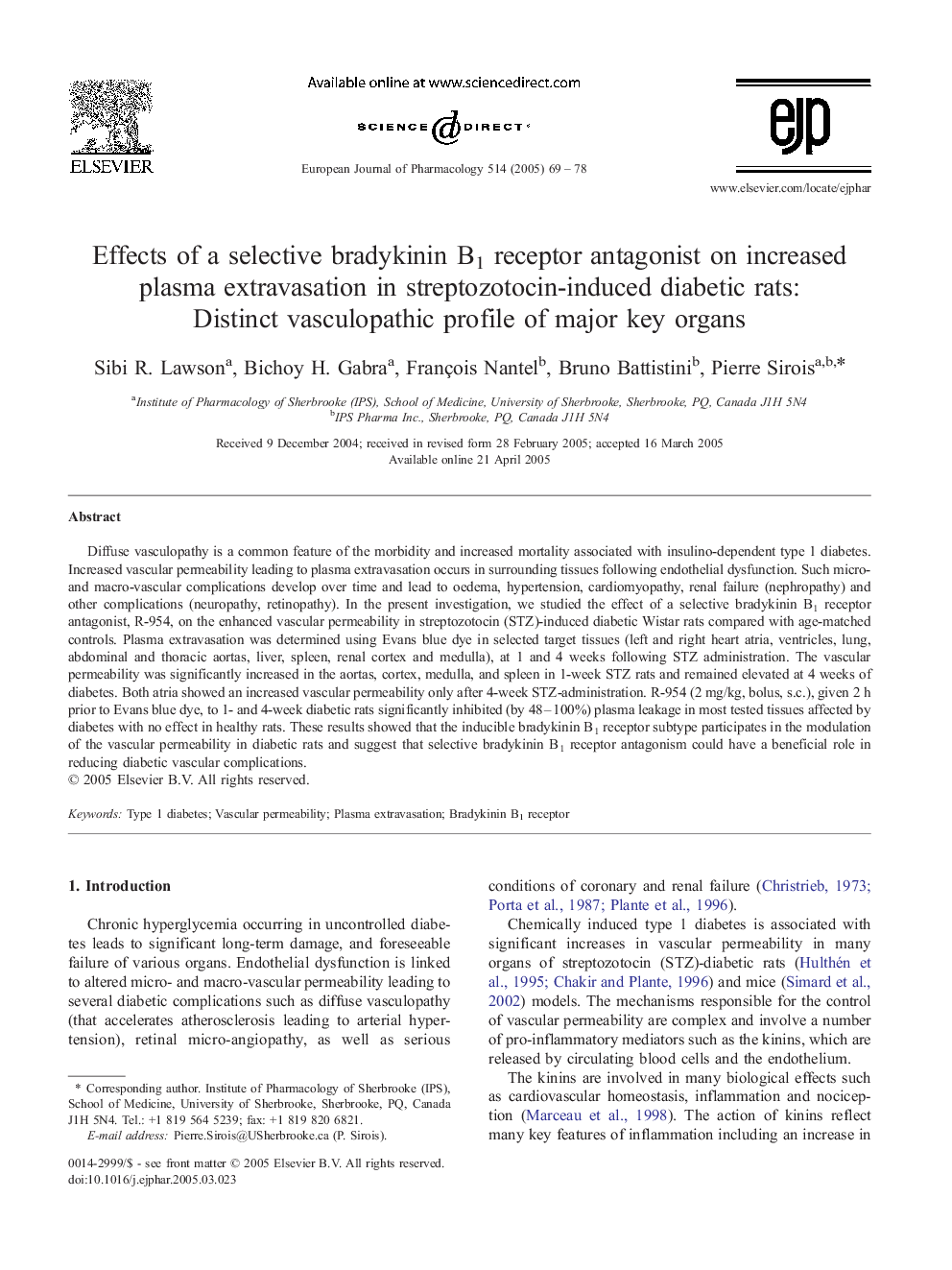| Article ID | Journal | Published Year | Pages | File Type |
|---|---|---|---|---|
| 9921349 | European Journal of Pharmacology | 2005 | 10 Pages |
Abstract
Diffuse vasculopathy is a common feature of the morbidity and increased mortality associated with insulino-dependent type 1 diabetes. Increased vascular permeability leading to plasma extravasation occurs in surrounding tissues following endothelial dysfunction. Such micro- and macro-vascular complications develop over time and lead to oedema, hypertension, cardiomyopathy, renal failure (nephropathy) and other complications (neuropathy, retinopathy). In the present investigation, we studied the effect of a selective bradykinin B1 receptor antagonist, R-954, on the enhanced vascular permeability in streptozotocin (STZ)-induced diabetic Wistar rats compared with age-matched controls. Plasma extravasation was determined using Evans blue dye in selected target tissues (left and right heart atria, ventricles, lung, abdominal and thoracic aortas, liver, spleen, renal cortex and medulla), at 1 and 4 weeks following STZ administration. The vascular permeability was significantly increased in the aortas, cortex, medulla, and spleen in 1-week STZ rats and remained elevated at 4 weeks of diabetes. Both atria showed an increased vascular permeability only after 4-week STZ-administration. R-954 (2 mg/kg, bolus, s.c.), given 2 h prior to Evans blue dye, to 1- and 4-week diabetic rats significantly inhibited (by 48-100%) plasma leakage in most tested tissues affected by diabetes with no effect in healthy rats. These results showed that the inducible bradykinin B1 receptor subtype participates in the modulation of the vascular permeability in diabetic rats and suggest that selective bradykinin B1 receptor antagonism could have a beneficial role in reducing diabetic vascular complications.
Related Topics
Life Sciences
Neuroscience
Cellular and Molecular Neuroscience
Authors
Sibi R. Lawson, Bichoy H. Gabra, François Nantel, Bruno Battistini, Pierre Sirois,
